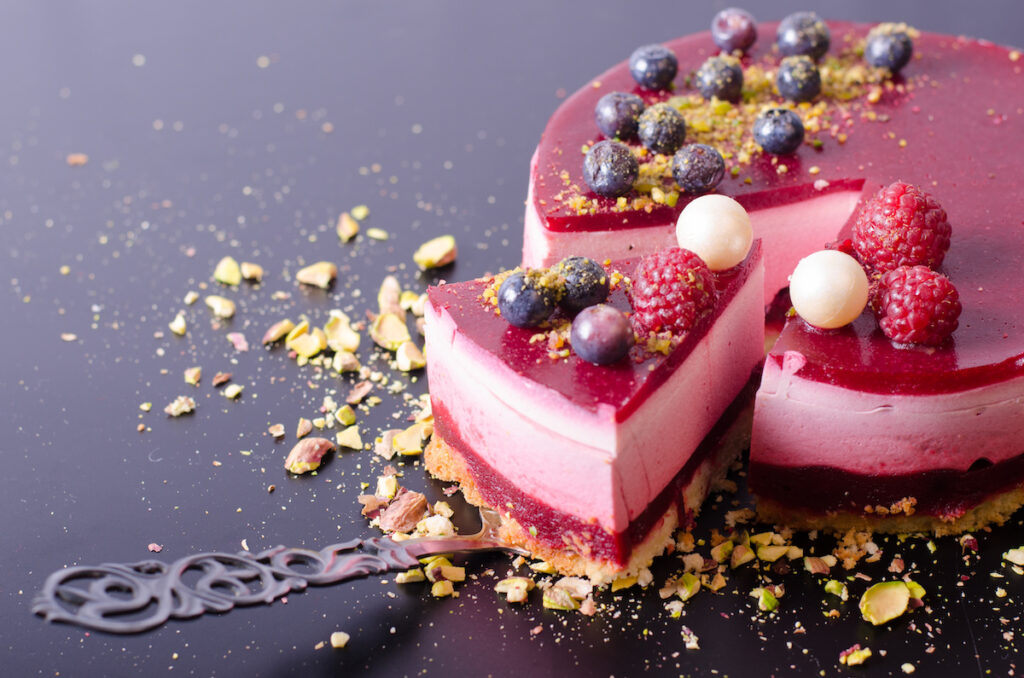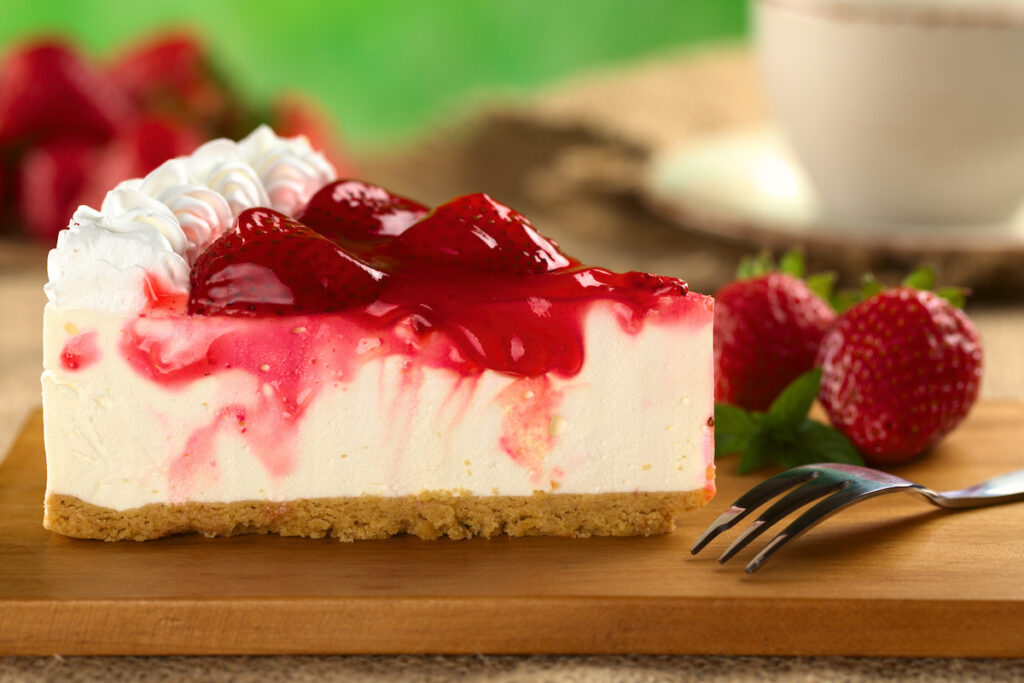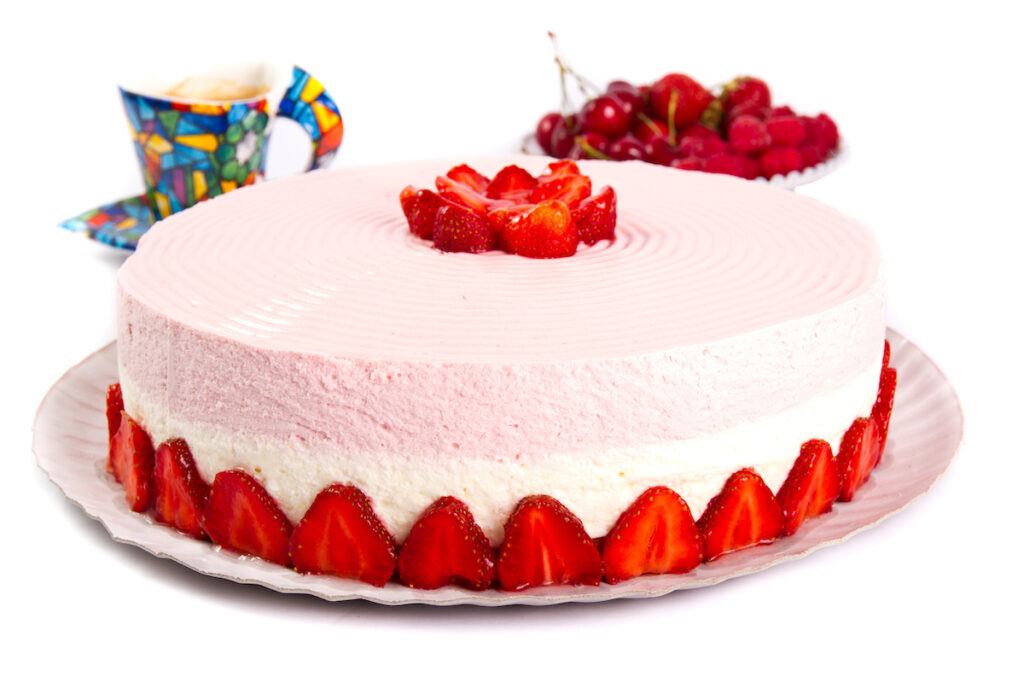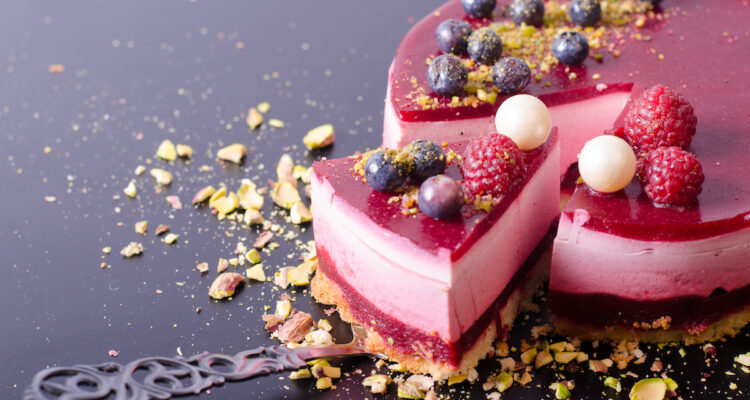
When it comes to baking, gelatin is a versatile ingredient that can be used in a variety of ways. It can help cakes set and hold their shape, add a smooth texture, and even enhance the flavor. But for those who have never used gelatin before, it can seem a bit intimidating. In this article, I’ll share my tips and tricks for using gelatin in cake, so you can achieve perfect results every time.
Before we dive into the specifics of using gelatin in cake, it’s important to understand what gelatin is and how it works. Gelatin is a protein that is derived from collagen, a substance found in bones and connective tissue. When gelatin is mixed with liquid and then cooled, it forms a gel-like substance. This makes it a popular ingredient in desserts, as it can help them set and hold their shape. However, it’s important to note that not all gelatin is created equal, and different types of gelatin have different properties. In the following paragraphs, I’ll explain how to choose the right type of gelatin for your cake, and how to use it correctly to achieve the desired results.
Understanding Gelatin
What is Gelatin?
Gelatin is a protein obtained from collagen, which is found in the connective tissues, bones, and skin of animals. It is a versatile ingredient that can be used in a variety of recipes, especially desserts. Gelatin is often used as a thickening agent to give desserts a smooth and creamy texture. It can also be used to set liquids into a gel or jelly-like consistency. Moreover, gelatin has health benefits that make some people consume gelatin on a regular basis.
Types of Gelatin
There are two main types of gelatin: powdered gelatin and sheet gelatin. Powdered gelatin is the most commonly used type of gelatin and is sold in packets. Sheet gelatin is sold in thin, translucent sheets. Both types of gelatin can be used interchangeably in recipes, but gelatin sheets are preferred by some bakers because it dissolves more easily and produces a clearer gel.
Gelatin Strengths
Gelatin comes in different strengths, which are measured in bloom. The higher the bloom, the firmer the gelatin will be. Most recipes call for a specific bloom strength, so it’s important to choose the right type of gelatin for your recipe. A bloom strength of 200 is considered standard, while a bloom strength of 250 or higher is considered strong.
When using gelatin, it’s important to hydrate or “bloom” it in cool water before using it in your recipe. This allows the gelatin to dissolve evenly and prevents it from clumping. To bloom gelatin, sprinkle it over cold water and let it sit for a few minutes until it becomes soft and spongy.
Gelatin can be dissolved in either hot or cold liquids, depending on the recipe. If dissolving in hot liquid, be sure to stir the gelatin until it is completely dissolved. If dissolving in cold liquid, let the gelatin sit for a few minutes until it has dissolved before adding it to your recipe.
Overall, gelatin is a versatile ingredient that can be used to create a variety of desserts, from jellies and mousse to gelatin desserts and even gelatin art. By understanding the different types and strengths of gelatin, you can create delicious desserts that are sure to impress.
Why Use Gelatin in Cake?
As a baker, I often use gelatin in my cakes to achieve a variety of desirable textures and effects. Here are a few reasons why I choose to use gelatin in my cake recipes:
1. Improved Texture
Gelatin is a natural protein derived from animal sources, which can help to create a smooth, creamy texture in cakes. It can be used to stabilize whipped cream, mousse, and other fillings, resulting in a firmer, more stable texture that holds up better over time.
2. Enhanced Flavor
Gelatin is a flavorless, colorless substance that can be added to cakes without affecting their taste. However, it can help to enhance the flavor of other ingredients, such as fruit purees or chocolate ganache, by providing a subtle, savory undertone that complements their sweetness.
3. Better Stability
Gelatin can help stabilize the cake, especially if it contains a lot of liquid or if it is a no-bake cake. The gelatin helps the cake hold its shape and prevents it from collapsing or becoming too soft.
4. Retained Moisture
Gelatin can help retain moisture in cakes, making them more tender and moist. This is especially important in sponge cakes or chiffon cakes, which can easily dry out.
5. Decorative Effects
Gelatin can also be used to create a variety of decorative effects in cakes, such as glazes, mirrors, and even three-dimensional sculptures. By combining gelatin with other ingredients, such as food coloring or edible glitter, bakers can create stunning visual effects that are sure to impress their customers or guests.
Overall, I find that using gelatin in my cakes helps me to achieve a more professional, polished look and feel. Whether I’m making a simple sheet cake or an elaborate wedding cake, gelatin is a versatile and valuable ingredient that I rely on to achieve the best possible results.

Using Gelatin in Cakes
When it comes to baking cakes, gelatin can be a useful ingredient to achieve certain textures and flavors. Here are some tips on how to use gelatin in cakes.
Substituting Gelatin
If you don’t have gelatin on hand, you can try substituting it with agar-agar, which is a plant-based alternative. However, agar-agar has a stronger setting power than gelatin, so you may need to adjust the amount used in your recipe accordingly.
Adding Gelatin to Cake Batter
Gelatin can be added to cake batter to help it set and hold its shape. To do this, dissolve the gelatin in cold water and let it bloom for a few minutes. Then, heat it up until it dissolves completely and add it to the cake batter. Be careful not to add too much gelatin, as it can make the cake rubbery and tough. You can also add Jello to your cake mix for moist and flavorful result. You can also make a poke cake using Jello.
Using Gelatin in Cake Fillings
Gelatin can also be used to thicken and set cake fillings, such as fruit fillings or custards. To do this, dissolve the gelatin in cold water and let it bloom for a few minutes. Then, heat it up until it dissolves completely and add it to the filling mixture. Chill the mixture until it sets.
Using Gelatin in Cake Toppings
Gelatin can be used to make cake toppings, such as whipped cream or mousse, more stable and less likely to melt or collapse. To do this, dissolve the gelatin in cold water and let it bloom for a few minutes. Then, heat it up until it dissolves completely and add it to the topping mixture. Chill the mixture until it sets.
Overall, gelatin can be a useful ingredient in cake baking, but it should be used in moderation and with caution. When using gelatin, be sure to follow the instructions carefully and don’t overdo it. With a little bit of practice and experimentation, you can achieve delicious and beautiful cakes with the help of gelatin.
Tips for Working with Gelatin
As a baker, I have worked with gelatin in various recipes, including cakes, mousse, and jellies. Here are some tips that I have learned along the way to help you work with gelatin like a pro.
Preparing Gelatin
Before using gelatin, it is essential to bloom it in cold water. Blooming is the process of hydrating gelatin to activate it. I usually use one tablespoon of cold water for every teaspoon of powdered gelatin or one sheet of gelatin. Once the gelatin has bloomed, it needs to be dissolved by heating it.
If you are using powdered gelatin, you can add it directly to the hot water or other liquid in your recipe and stir until it dissolves. For sheet gelatin, you need to remove it from the cold water and squeeze out any excess water before adding it to the hot liquid.
Avoiding Common Mistakes
One common mistake when working with gelatin is adding it directly to the recipe without blooming it first. This can result in clumps of gelatin that do not dissolve properly, ruining the texture of your dessert. Another mistake is adding hot liquid to the bloomed gelatin, which can cause it to set too quickly and not dissolve properly.
It is also important to note that gelatin can weaken when exposed to acidic ingredients like citrus fruits, pineapple, or vinegar. If you are using acidic ingredients in your recipe, you may need to increase the amount of gelatin to achieve the desired set.
Storing Gelatin
Gelatin should be stored in a cool, dry place away from moisture and heat. You can store powdered gelatin in an airtight container for up to two years and sheet gelatin for up to six months. Once you have opened a package of gelatin, it is best to use it within a few months.
When using gelatin in desserts that need to be molded, it is important to chill them in the refrigerator until they are set. You can also use a mold or container to give your dessert a specific shape.
Overall, gelatin is a versatile and useful ingredient in baking and desserts. With these tips, you can confidently work with gelatin and create delicious desserts that are sure to impress.

Gelatin Cake Recipes
When it comes to creating delicious and visually stunning cakes, gelatin can be a versatile and useful ingredient. Gelatin can help set desserts, add flavor and color, and create unique textures. In this section, I will share some gelatin cake recipes that you can try at home.
Jelly Cakes
Jelly cakes, also known as 3D jelly cakes or gelatin art cakes, are a popular dessert that originated in Asia. These cakes are made by injecting colored gelatin into a clear gelatin base to create detailed and stunning designs and patterns. To make a jelly cake, you will need special tools such as a syringe and a mold.
Here is a simple recipe for a jelly cake:
- Bloom 2 tablespoons of powdered gelatin in 1/4 cup of cold water.
- Heat 1 cup of water and 1 cup of sugar in a saucepan until the sugar dissolves.
- Add the bloomed gelatin to the sugar syrup and stir until dissolved.
- Add 1/2 cup of cold water and a few drops of food coloring and stir to combine.
- Pour the mixture into a mold and chill until set.
- Inject colored gelatin into the clear gelatin base using a syringe to create your desired design.
- Chill until set and serve.
Mousse Cakes
Mousse cakes are light and airy desserts that can be made with gelatin to help set the mousse. Gelatin can also add stability to the mousse and prevent it from collapsing. Here is a recipe for a chocolate mousse cake:
- Bloom 1 tablespoon of gelatin powder in 1/4 cup of cold water.
- Melt 8 ounces of chocolate in a double boiler.
- Whip 1 cup of heavy cream until stiff peaks form.
- Heat 1/2 cup of milk in a saucepan until steaming.
- Add the bloomed gelatin to the milk and stir until dissolved.
- Pour the gelatin mixture into the melted chocolate and stir to combine.
- Fold the whipped cream into the chocolate mixture.
- Pour the mousse into a mold, wrap with plastic wrap, and chill until set.
- Serve with whipped cream and chocolate shavings.
Panna Cotta Cakes
Panna cotta is a creamy Italian dessert that is traditionally made with cream, sugar, and gelatin. Gelatin helps set the panna cotta and give it a smooth and silky texture. Here is a recipe for a raspberry panna cotta cake:
- Bloom 1 tablespoon of powdered gelatin in 1/4 cup of cold water.
- Heat 1 cup of heavy whipping cream and 1/2 cup of sugar in a saucepan until the sugar dissolves.
- Add the bloomed gelatin to the cream mixture and stir until dissolved.
- Add 1 cup of raspberry puree and stir to combine.
- Pour the mixture into a mold and chill until set.
- Serve with fresh raspberries and whipped cream.
In conclusion, gelatin can be a versatile and useful ingredient when it comes to creating delicious and visually stunning cakes. Whether you are making a jelly cake, mousse cake, or panna cotta cake, gelatin can help set your dessert and add unique flavors and textures. So why not try incorporating gelatin into your next baking project and see what creative and tasty desserts you can come up with!
Conclusion
In conclusion, gelatin is a versatile ingredient that can be used in a variety of ways to enhance the texture and appearance of cakes. Whether you are making a glaze, mousse, or filling, gelatin can help you achieve a smooth and creamy consistency that will impress your guests.
One of the key things to keep in mind when using gelatin in cake is to properly bloom it before adding it to your recipe. This involves hydrating the gelatin in cold water and allowing it to absorb the liquid before incorporating it into your mixture.
Another important consideration is the type of gelatin you use. Both powdered and sheet gelatin can be used in baking, but they have slightly different properties and may require different preparation methods.
Overall, if you are looking to take your cake baking to the next level, experimenting with gelatin is definitely worth a try. With a little bit of practice and some creativity, you can use this ingredient to create stunning desserts that are sure to impress.

